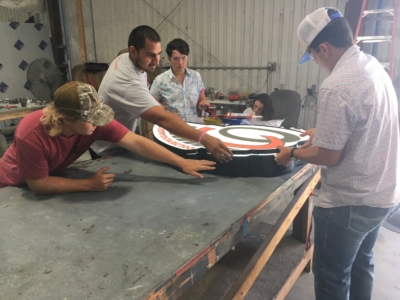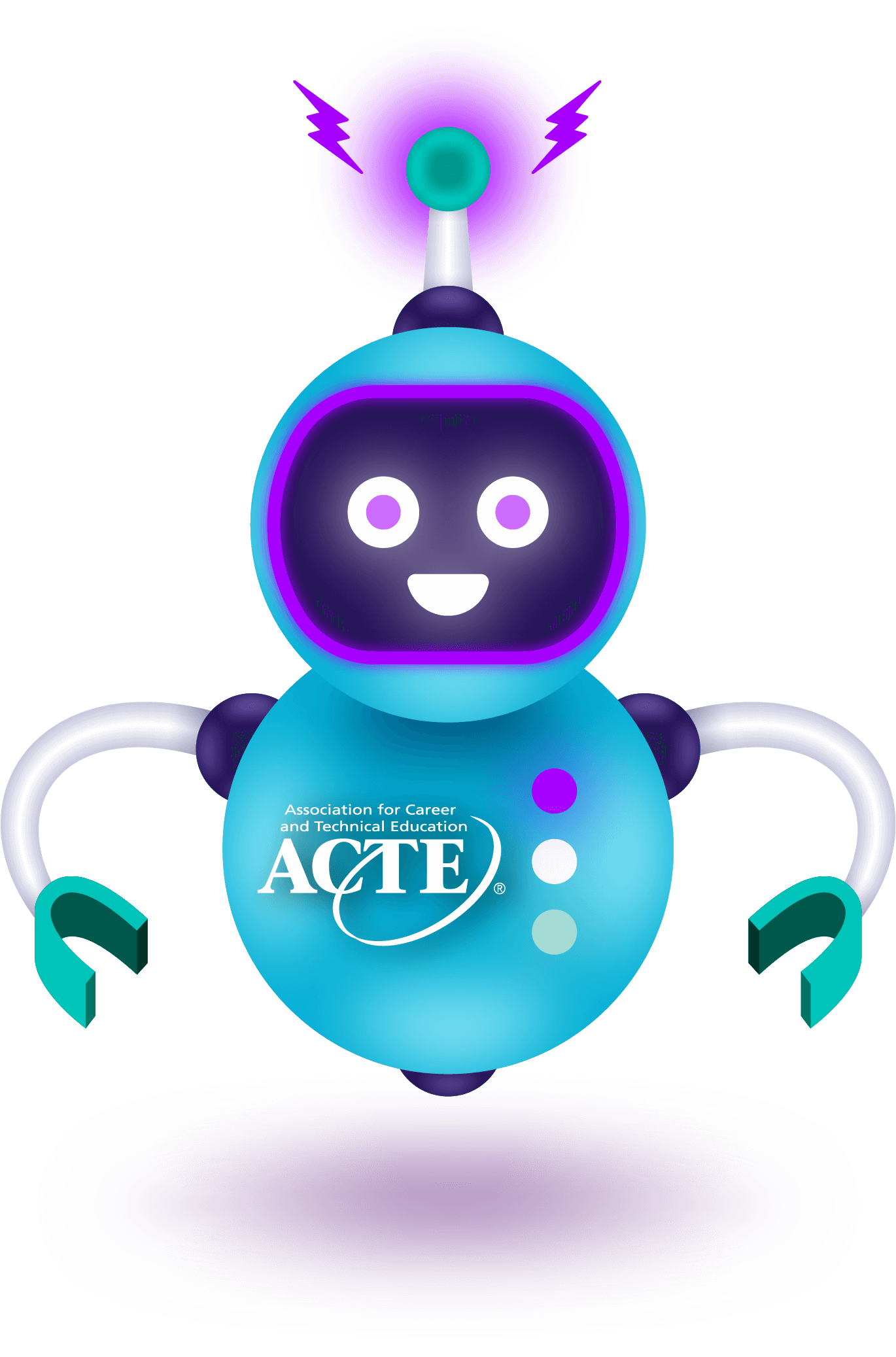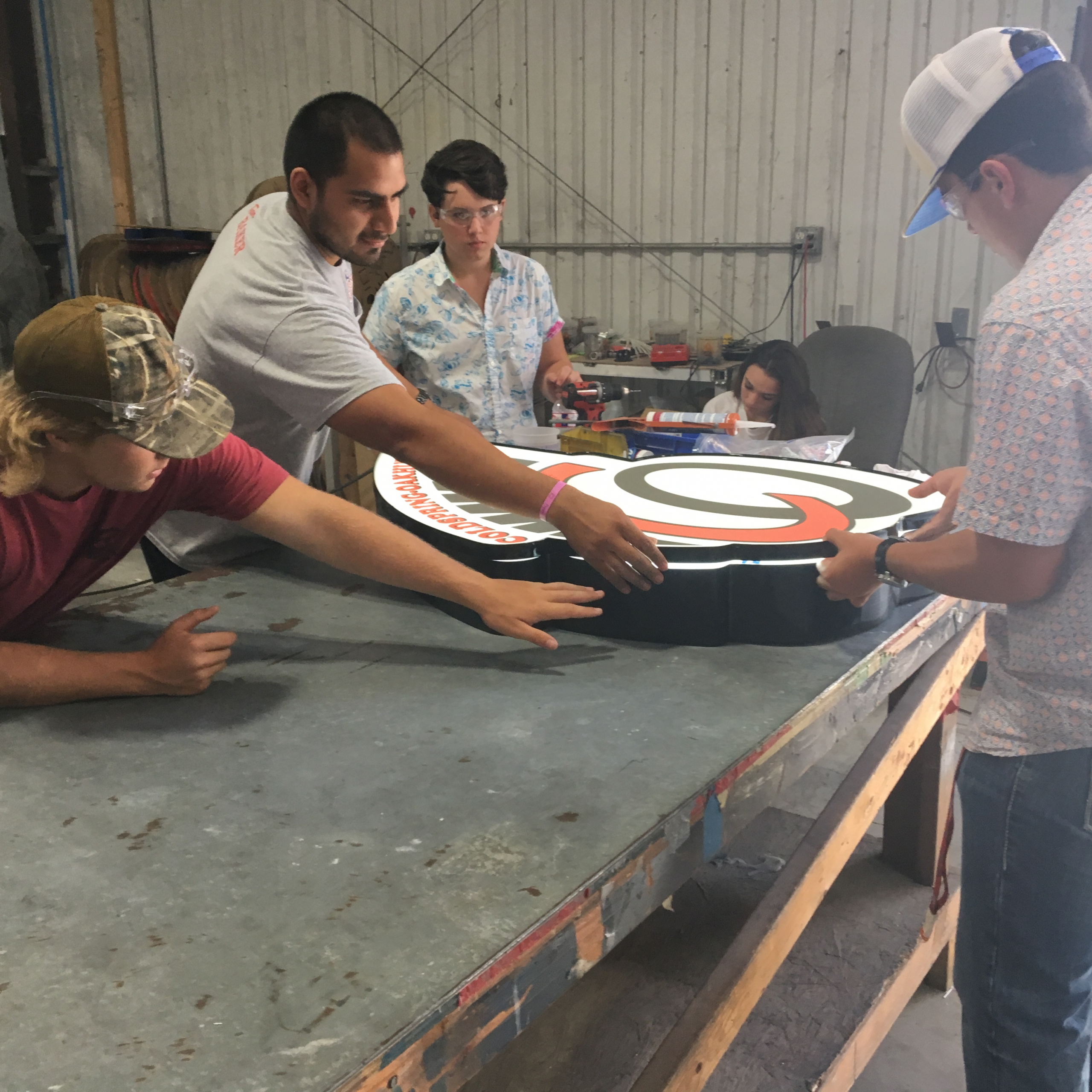
Students who have an opportunity to train on the latest equipment may have an advantage when it comes to being hired. Companies that build a relationship with students can attract much-needed workers — and know something of what they’re getting.
But what’s the role of — and benefit to — educators in work-based learning programs? Several sign, graphics and visual communications companies have successfully developed these programs and offer insight.
Understand the Industry
Each year, sign, graphics and visual communications companies participate in the annual Sign Manufacturing Day event, which opens doors for tours so that students can learn more about the industry. This introduction can help students envision their futures — and make educators aware of solid careers in an industry that often flies under the radar.
These companies produce all types of signs, from small printed products to massive digital displays. In between are branded signs like those famous Golden Arches or wayfinding signs that point to a specific building on a campus.
The sign, graphics and visual communications industry — like many other technical trades — is desperate for workers. It is a rapidly growing industry, too.
“It’s extremely hard to find workers because the sign industry is so competitive,” said Sarah Norris, human resources director for Cummings, a national sign company with high-volume production facilities in California and Alabama. “We’ve experienced the rapid pace of growth, so we’ve staffed up our plants.”
These rapid rates of growth can be seen across the spectrum: from small companies with just a handful of employees to the largest national and international sign manufacturers who may have thousands of workers.
Norris said she had hired 26 employees at one factory in the previous month. Skills needed range from welding to electrical, installation and fabrication. The sign, graphics and visual communications industry offers plenty of opportunity for long-term career growth. Within just a few years of launching a co-op with a local community college, one student is now a team lead at Cummings, Norris said.
“It’s an industry that allows you to grow in what you’ve been hired at, or to move up,” said Melanie Gillis, human resources manager for Ramsay Signs in Portland, Oregon. “We will not stop anybody from their growth.”
Students encounter signs hundreds of times per day but may never think about what it took to get the sign there, from concept to creation, and fabrication to installation.
“I can honestly say I never met anyone who thought of the sign, graphics and visual communication industry as a viable career option in high school or college,” said Matt Baker, co-owner and current operator of Bakers’ Signs and Manufacturing in Conroe, Texas. “That’s unfortunate because of the career opportunities we have in the industry. I’ve got several people making six figures this year. In terms of financial viability, there are huge pros to the sign industry as a whole.”

Because the products created make tremendous contributions to customers, the industry offers a “huge sense of accomplishment at the end of the day,” Gillis said. “It’s creative. It’s artistic. It’s technical and it’s not boring. You always have the next project that you get to create.”
A Collaborative Approach
The sign, graphics and visual communications industry is built on a collaborative approach. It collaborates with customers to land on just the right visual display and marketing techniques. It works with local cities on permitting approvals. It brings the same collaborative spirit to work with educators, too.
“Sign Manufacturing Day has really helped us to build better relationships with teachers,” said Jason Buxton, owner of Midwest Light >amp; Signs in Farmington, Missouri. After the 2018 event, two students applied for internships. But it is the ongoing relationship with the educators that has been the most beneficial, he said. “Not only are they trying to help; we’re helping them, too.”
Buxton has spoken with classes about trends in the industry and has advised on equipment purchases.
Baker said educators can learn a lot by engaging with the industry. “Software is changing every year. There are new tools and equipment coming out all the time. If teachers aren’t staying in touch with us, they may be teaching outdated methods.”
Baker’s participation in Sign Manufacturing Day pays dividends for the participating schools as well. Baker will reach out to the local school to ask if they need a sign on site. A Bakers’ employee will design the sign and the students will create it on the tour.
“Students have the ability to show off their craftsmanship, and every time somebody walks by that sign in the hallway, it allows us the ability to continue the dialogue,” Baker said.
An added bonus for the students and schools: Baker allows teachers to bring groups of students to pull from scrap products to use for welding. “It’s creating a path of least resistance to the materials that I’m going to donate and we get them exposure to the materials that we’re working with.”
There are long-term benefits, too, says Jane Mosey-Nicoletta, business development and community outreach professional with Ace Sign Company in Springfield, Illinois. “The more they can experience this, the better informed they are when they complete school,” she said. “What if they go through all this training and decide they hate it? Touring facilities, talking to people in the industry and job shadowing can help them make a determination about whether this is a field they’re passionate about.”
Constant Contact
Even if the timing isn’t right at the moment, things can change quickly. Maintaining communication is important.
When Gillis met a high school senior interested in graphic design, she kept in touch until he turned 18. “I kept reminding him we had a job for him if he was willing to be trained.” She uses the same approach with educators. “Staying in touch reminds teachers that there are jobs for their kids here.”
There are things that companies want from teachers, too, particularly when it comes to employability skills.

“Students really need to know how to present themselves,” Norris said. “How to shake hands, ask questions, follow up. Resumes can give a snapshot of experience, but for students who haven’t had a job, a resume is important to detail what you’ve learned in school, the classes that you’ve taken.”
And if there’s one thing that Norris values most, it is “open, honest communication.” That, she believes, is a skill that “can always get somebody to the next level.”
In an industry that is rapidly expanding and in need of new workers, getting students and educators in the door is the first step in an ongoing relationship.
Alison Kent is director of workforce development for the International Sign Association. In addition to creating training programs for sign, graphics and visual communications companies, she assists them in recruiting workers into the industry. Email her.







